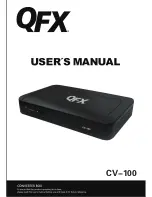
8
The SwitchPilot Familie
5.2.3.2. Digital servos
Inside each digital servo, a microcontroller makes sure that the
motor tries to reach any desired position even when no external
pulse signal is received. These servos may also twitch at end po-
sitions because they try to force against the lever all the time. To
prevent this, the user needs to interrupt the servo’s power supply.
However, it may happen that when re-applying the power, the
servo may twitch again.
5.2.3.3. ESU servo motor
ESU offers two different versions of servo motors: 51804 uses a
plastic gearing, 51805 is equipped with metal gears. These servos
are equipped with a microcontroller that is optimized for the use in
model railroad environment. It prevents any twitching at all times.
In addition, ESU supplies a lot of accessories such as levers, moun-
ting brackets and screws for a convenient installation
5.2.4. Feedback inputs
Through RailCom® the SwitchPilot can send the current turnout
position back to the digital control unit. For this the turnout needs
to have the corresponding feedback contacts which must be con-
nected to feedback contact input
FB A
and/or
FB A
(see Figure
6 for details).
6. Connection to the digital system
We recommend setting all parameters of the SwitchPilot prior to
installing the unit on your layout.
6.1. Connecting elements of the SwitchPilot
Figure 1 shows the SwitchPilot
a) Wire turnouts, signals, un-couplers or similar devices to the ter-
minals of the (transistor) outputs 1 to 4. The terminals FB A and
FB B are used for status feedback of the device.
b) This multi-pin connector serves to wire two commercially
available RC-Servos (e. g.: Graupner®, Futaba® or ESU) and
represents the outputs 5 and 6 of the SwitchPilot.
c) The power supply for the SwitchPilot and all the devices con-
nected to it are wired to the terminals Pw A und Pw B. We
recommend a filtered DC power supply (such as ESU 50119)
as well as the digital track voltage can be used.
d) The screw terminals Trk A and Trk B connect the SwitchPilot
with the power output of a command station (e.g. booster
output) transmitting the digital commands.
e) The switch controlling the operating modes allows you to
select any of the supported modes such as k83, user mode and
k84-mode (also compare with chapter 5.2.1).
f) The LED „PROG” in conjunction with the
g) programming button helps you to set the digital address of the
SwitchPilot. This process is described in chapter 7.
h) Power-LED: This is on once power is supplied to the decoder.
j) The extension socket / plug connect the SwitchPilot and the
SwitchPilot Extension mechanically and electrically.
k) Decoder ground – needed for manual turnout operation
m) Monitor-LED for Output OutA: Lits when the output is active
n) Monitor-LED for Output OutB: Lits when the output is active









































